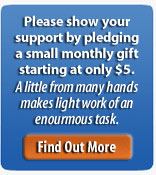99.9% of COVID-19 Virus Dead in 30 Seconds With UV LEDs
The study is the first of its kind in the world.
Ultraviolet radiation is a common method of killing bacteria and viruses. Now, researchers from Tel Aviv University have proven that the novel coronavirus, SARS-CoV-2, can be killed efficiently, quickly and cheaply using ultraviolet (UV) light-emitting diodes (UV-LEDs) at specific frequencies.
“We discovered that it is quite simple to kill the coronavirus using LED bulbs that radiate ultraviolet light,” said Prof. Hadas Mamane, head of the Environmental Engineering Program at Tel Aviv University's School of Mechanical Engineering, who led the study with Prof. Yoram Gerchman and Dr. Michal Mandelboim.
She said that the UV-LED bulbs require less than half a minute to destroy more than 99.9% of the coronaviruses.
The study is the first of its kind in the world. An article about it was published earlier this month in the Journal of Photochemistry and Photobiology B: Biology.

UV-A has a wavelength in the range of 315 nanometers (nm) to 400 nm. UV-B, also known as medium wave light, has a wavelength of 280-315 nm; UV-C has a wavelength of 200-280 nm.
UV-A is emitted by the sun (and artificial sources like tanning beds) and is weaker than UV-B and C. It has some human benefits, such as the creation of vitamin D, but it is also what causes sunburns and, in some cases, skin cancer.
UV-B and C radiation never really reaches humans naturally because these rays are absorbed by the earth’s ozone layer.
These ultraviolet wavelengths, which are what Tel Aviv researchers were examining, are especially effective in disinfection using UV-LED bulbs.
“We know, for example, that medical staff do not have time to manually disinfect, say, computer keyboards and other surfaces in hospitals – and the result is infection and quarantine,” said Mamane. “The disinfection systems based on LED bulbs, however, can be installed in the ventilation system and air conditioner, for example, and sterilize the air sucked in and then emitted into the room.”
She added that, "We are also developing, together with a scientist in North Western University a transparent coating that can be dipped or sprayed on surfaces and can kill viruses using visible light LEDs that are not dangerous and are used everywhere, providing another application for regular LEDs."
In her team’s research, they managed to kill the virus using cheaper and more readily available LED bulbs – 285 nm vs. 265 nm bulbs – which consume little energy and do not contain mercury like regular UV lamps.
She said that as the science develops, the industry will be able to make the necessary adjustments and install the bulbs in robotic systems, or air conditioning, vacuum and water systems, and thereby be able to efficiently disinfect large surfaces and spaces.
“Our research has commercial and societal implications,” Mamane said.
She added that her team had been working on UV-LEDs for a long time before coronavirus. But when COVID-19 surfaced, they tried to see if they could transfer their efforts to tackling the human coronavirus, studying the use of LEDs for killing corona at different frequencies.
She said the 285 nm LED is 15% to 30% less expensive and requires only a little more time to be effective.
“Anything that can reduce cost could help implementation,” she said.
She added that UV LEDs have an advantage because they can be turned on and off in an instant.
Mamane believes that this technology is the future, adding that she expects that by 2025, it will be cost effective enough to become mainstream.
“UV LEDs have a huge future,” she added. “Of course, as always, when it comes to ultraviolet radiation, it is important to make it clear to people that it is dangerous to try to use this method to disinfect surfaces inside homes. You need to know how to design these systems and how to work with them so that you are not directly exposed to the light.”






















